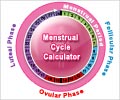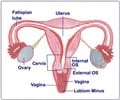From a woman’s viewpoint, it takes a lot of time, focus and energy to realize the enormity of being the ocean with your very own tide every month. Women give thanks for repose and restoration as the monthly cycles start cleansing the body of last month’s death and prepare the body to receive the new month’s life. It is believed that each month a woman will experience some changes in the way she perceives herself and experience her world in accordance to where she is in her menstrual cycle.
There has been lot of speculations over the years about the effect of the changing phases of the moon on human health and behavior, like some people going crazier on full moon night. Research suggests that the full moon may be linked to an increase in unexplained strokes, gastrointestinal bleeding and seizures.For many generations now, a woman’s monthly cycle has been tied to the moon cycle most likely because they’re about the same duration; a “typical” menstrual cycle lasts for 28 days and a lunar cycle lasts 29.5 days. The moon cycle as we know changes gradually from the waxing new moon of increasing light, to the full moon, then to the dark waning moon of decreasing light and back again to the waxing new moon of increasing light again.
Some women start their menstruation on the crescent moon, some on the full moon, some on the waning moon, and others on the new moon. Some researchers believe that it is possible for a woman to have two fertile times during her menstrual cycle: the first one is when she ovulates and the second according to her lunar phase fertility period.
Just like the moon's journey goes through numerous phases, a woman's menstrual cycle can also be divided up into clearly experienced phases. It is believed that the moon's cycle influences her energy that she experiences throughout the month; the intensity of the energies depends upon where the two cycles overlap. As women become more aware of the different phases and how they experience them, it leads to a far greater acceptance of their bodies and their inherent feminine nature.
Dr. Philip Chenette, who is one of the infertility specialist of the Pacific Fertility Centre in San Francisco analysed anonymous data mobile phone app called ‘Glow’ that women use to track their monthly cycle. The researchers were intrigued by the fact that almost every woman’s menstrual cycle lasts four weeks, which is roughly the time between two full moons and this curiosity led to further studies.
When the researchers looked at figures for more than 8,000 women from all around the world, they could find a clear link between the timing of their monthly cycles and the phases of the moon. Almost a fifth of women in the study began their period on the day of the full moon or two days before or after. This meant that these women would be at their most fertile a fortnight before a full moon, when the sky is darkest.
Dr. Chenette further added “It turns out that probably just goes back to evolution and the fact we used to live outdoors and we were exposed to lunar cycles for thousands and thousands of years. And that related to harvest and times of plenty and all these kinds of things and reproduction, of course, has to be timed to natural rhythms. It’s just a fascinating phenomenon.”
Professor Charles Kingsland, of the Hewitt Fertility Centre at Liverpool Women’s Hospital, said “If a woman’s period starts with the full moon, she will be at her most fertile a fortnight earlier, when the sky is darkest. The lack of light would have shielded amorous caveman couples from hungry predators.”
Simon Wood, who is a consultant gynaecologist at the Countess of Chester Hospital is quite skeptical about the results of the study as many studies conducted in the past have found no link between ovulation and the moon.
Professor Sheena Lewis, of Queen’s University Belfast, said: ‘The only relationship between period and the full moon is that they both occur once every four weeks.’
So if you are trying to conceive, it may be worthwhile charting your menstrual cycle symptoms, like pre-menstrual syndrome (PMS) and cervical consistency, in correlation to the moon's phases. Once you have established your menstrual patterns, then you need to find out what phase the moon is in to know what stage of your monthly cycle you are in.
Source-Medindia













